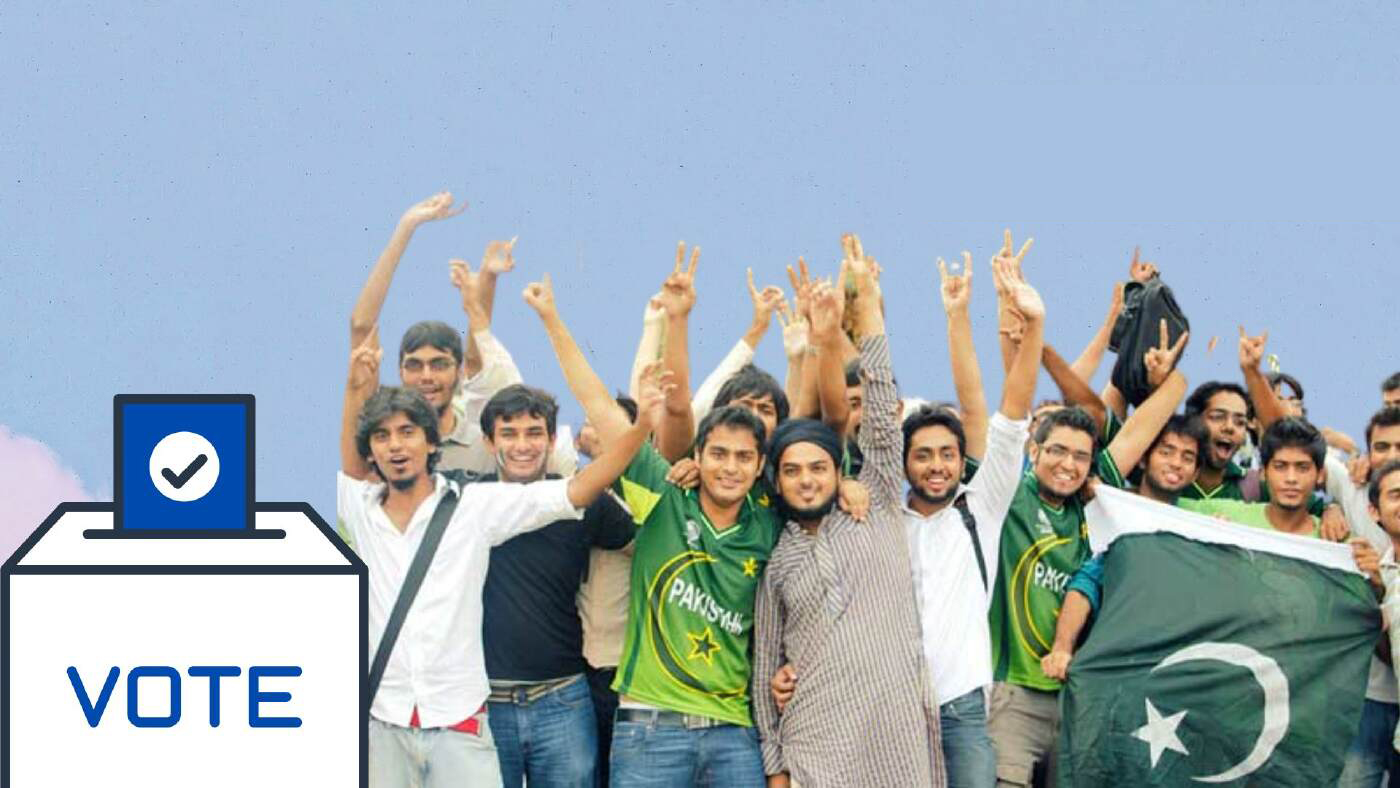The Youth’s Role in Pakistan’s Political Landscape Post-February 2024 Elections

As Pakistan navigates the aftermath of its general elections, the role of youth in shaping the country’s political future has become increasingly evident. Seven months after the polls, the landscape remains turbulent, with significant developments highlighting both the challenges and the resilience of young Pakistanis.
In Pakistan, it has long been customary for politicians to announce developmental projects and opportunities for the youth ahead of elections. However, the actual representation of young people in parliament remains minimal. The Election Commission’s data up to September 2023 reveals that voters aged 18 to 35 constitute a significant 43.8% of the electorate, totaling over 55.9 million individuals. Despite this, political parties often hesitate to field young candidates, preferring seasoned politicians or “electable” who have previously secured wins.
The 2013 elections saw Pakistan Tehreek-e-Insaf (PTI) introducing new faces, such as Murad Saeed, who emerged as a young leader winning from NA-29 Swat at just 27. Despite initial success, PTI’s reliance on fresh faces dwindled by 2018, with the party increasingly depending on seasoned politicians. This shift has raised questions about the true extent of political parties’ commitment to youth representation.
Looking ahead to the February 2024 elections, political parties activated their youth wings in a bid to attract younger voters. Ahmad Bilal Mehboob of the Pakistan Institute of Legislative Development and Transparency (PILDAT) attributed this focus to the substantial proportion of voters aged 18 to 35. According to Election Commission data, the number of registered voters stood at 127.5 million, with 56.86 million being young voters. This marked a significant increase from 2018 and underscored the potential influence of this demographic.
The 2024 election cycle witnessed a historic surge in youth voter turnout, reaching 48%, a notable increase from 37% in 2018. This rise reflects the effectiveness of initiatives aimed at empowering young voters and amplifying their voices within the democratic framework. However, the political landscape has not been without its challenges. The arrest of PTI workers, including the notable case of Sanam Javed, highlighted the precarious position of young activists. Javed, initially a PTI worker who faced nearly a year of detention, emerged as a resilient leader advocating for justice and equal representation.

Despite the initial enthusiasm, the political unrest following the May 9, 2023, arrest of Imran Khan led to widespread protests and a crackdown on PTI leaders. Many young supporters faced legal troubles, with some still in detention. The political climate remained tense, and the impact on voter turnout and engagement is yet to be fully assessed.
The recent elections have brought to light the disconnect between political promises and the realities faced by young Pakistanis. While youth participation in elections was robust, key issues such as inflation, education, and employment received limited attention in party manifestos. This gap between expectations and outcomes may influence future youth engagement and voter behavior.
Geo Election Cell’s research uncovered interesting statistics, showing that more than 52% of the National Assembly members are middle-aged, while the percentage of young members is less than 4%. Statistics reveal that 46 newly elected members of the National Assembly are aged between 36 and 45, 56 members are between 56 and 65 years old, and 47 members fall within the 66 to 75 age bracket. Additionally, 13 newly elected members have seen 75 springs of life. The data indicates that out of 265 newly elected members, only 10 are young, aged between 26 and 35 years, while 93 members are between 46 and 55 years old.
A Shocking Election Outcome
Following the turmoil of 2023, the February 2024 elections appeared predictable to many. After May 9, 2023, was declared the darkest day in Pakistan’s history, a large number of PTI workers and followers were imprisoned. The entire PTI leadership was arrested, and even those who spoke in favor of PTI on social media were targeted. Given these circumstances, it was widely believed that PTI was almost finished. The Supreme Court, due to PTI’s failure to conduct intra-party elections, even revoked its electoral symbol. Following the indictment of Imran Khan, he had to resign from his position as party chairman. In essence, there was an atmosphere of complete fear among the party’s supporters in the country. There were no familiar faces, no electoral symbol, and no political rallies or election campaigns. Many independent candidates supported by PTI withdrew from the elections at the last moment under pressure.

However, the results of the February 8 election surprised every institution, every party, and all policymakers. The party, often labeled as a “burger party,” received a silent vote from the youth, and even unknown PTI-supported candidates won in their constituencies. Jahangir Khan Tareen, in his own constituency, was defeated by a completely unknown young candidate who had been presented by the party as their candidate just a day before the election.
The significant youth turnout and involvement in the 2024 elections represent a crucial moment for Pakistani democracy. However, the challenge will be to ensure that this engagement translates into meaningful political representation and policy changes. The broader political dynamics, including the aftermath of political arrests and ongoing unrest, will play a pivotal role in shaping the future of youth involvement in Pakistani politics.
The evolving role of youth in Pakistan’s political landscape highlights both the opportunities and challenges of democratic participation. As the country moves forward, addressing the disconnect between youth aspirations and political realities will be essential for sustaining engagement and fostering a more inclusive political environment.




